Ed Driscoll interviewed me for about ten minutes on the law and its effects; you can now listen to the Sirius/Pajamas Radio show here, or download it as a podcast.
Posts Tagged ‘CPSIA’
CPSIA chronicles, February 21
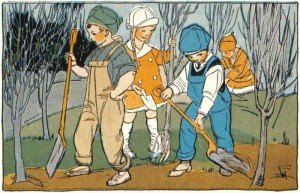
- For the Handmade Toy Alliance, Jill Chuckas responds to the NYT’s ever-so-clueless CPSIA editorial. The Alliance also recently published a Myth vs. Fact sheet. Among the points addressed: “Myth: Violations of the CPSIA this year will not result in penalties.” “Myth: Further clarification is all that is needed.” and “Myth: Products Tested to European Union Standards will Satisfy New US Standards”. And did you know it’s now unlawful to donate to a charity (let alone sell) a children’s item with paint on it, even if you painted it yourself using lead-free paint, if you haven’t put it out for third-party testing?
- It’s my impression that beyond the precincts of the “consumer”/Litigation Lobby groups, the bill’s original sponsors on Capitol Hill, and of course the New York Times, it’s getting harder to find all-out boosters of the law who still maintain there’s nothing wrong with it. On Tuesday, however, the Houston Chronicle did publish a perfectly inane editorial taking this view, the refutation of which is left as an exercise to the reader.
- Deputy Headmistress at Common Room has taken the lead in blogging many angles of the law and her latest must-read examines the legislative history of CPSIA’s enactment, including the roles of Public Citizen, the Consumer Federation of America, PIRG, and Sen. Mark Pryor (D-Ark.), as well as business groups like NAM, the latter of which warned against some of the law’s more extreme provisions as placing various advantages into the hands of plaintiff’s lawyers. This makes a good jumping-off point for further research on whether the ongoing CPSIA calamity should truly be regarded as a case of “unintended consequences” and, if so, unintended by whom. One tidbit among many: she says that Travis Plunkett, testifying for the Consumer Federation of America, spoke in favor of rules (not adopted) under which “all product sellers [would] be required to post bonds sufficient to cover the costs of a recall in advance of any ‘potential’ recalls.” Typical New York Times coverage of the day, by the reliably pro-regulation Stephen Labaton, can be found here.
- Tom Pearson, Punditry by the Pint:
I’ve written before how law and regulation can be an insurmountable impediment for the weakest, poorest and most powerless in our society. In this case at least we will partly realize what we’re missing when the great independent thrift and book shops start going under and fewer people make handcrafted clothing and toys for children. Still, we’ll never see what could have been in this small niche of our largely self-created social order. This is how the American dream of hope and opportunity dies, one well-intentioned, but misguided rule at a time.
Life is a messy and wonderful experience. If you try to hermetically seal life, even children’s lives, from risk, you will kill all that messiness and creativity that makes life worth living. Yes, risk can be damaging, painful and even fatal, but, in this case, the cure is worse than the disease.
Another libertarian view from J.D. Tuccille in the Examiner: “In the name of the children, we cut the kids off from their own history.”
- Yesterday (Friday) the Consumer Product Safety Commission published a bundle of letters it received pro and con on proposed exemptions from the lead rules. Plenty of raw material here for CPSIA-watchers (long PDF file);
- Since many people these days visit Overlawyered for the ongoing coverage on this topic, I’ve added a new display on the rightmost sidebar (under the red teddy-bear-as-St.-Sebastian icon) with sub-category tag links for libraries, apparel and needle trades, toys, and so forth. I’ve populated these categories with old posts somewhat in haste, so if you see omitted posts that aren’t tagged with relevant labels, give me a shout.
Public domain image: Grandma’s Graphics, Ruth Mary Hallock.
CPSIA: Library books under an orange tarp
It’s happening at the Morton James Public Library in Nebraska City, Neb.:
A federal child product safety law has staff at the Morton James Public Library quarantining books behind bright orange plastic and wondering how many must be pulled forever from the shelves. …
Over 1,000 books with 1985 or older on the copyright page have already been quarantined behind an orange curtain.
Library Director Barbara Hegr said librarians will try to determine if the edition is a printing after the copyright date, so the book may be preserved.
Click through to the news story at the Nebraska City News-Press for more details, as well as a photo you may not soon forget. You can also Digg the story here.
CPSIA: Importing older children’s books
You didn’t think they were going to make it that easy, did you?
On February 10, 2009 we have added a Shipping Restriction for our Childrens Books, as follows: Effective February 10, 2009 Children’s Books will no longer be shipped to the USA. This change is being made because of the United States Consumer Product Safety Act (CPSIA). … We have added “SHIPPING NOT AVAILABLE TO THE USA” to the description of the books affected by this shipping restriction.
— announcement at Canada-based online used-book seller Trylinski Books.
Relatedly, on the domestic front: “The fun is over” says online vintage seller “Scribbler”, who’s pulling her stock of pre-1985 kids’ books, and yet feels optimistic: “I have to think the government will do the right thing over the next few months and alter this crazy law to make vintage kids’ books legal again, so I don’t expect to be out of business too too long.” (She’s also giving away to a random post-commenter a post-’85 reprint of a book by one of my favorite children’s illustrators, Wanda Gag.) Occasional eBay/Craigslist reseller jensyw tries to puzzle out the law’s requirements. More: Freddie DeBoer/League of Ordinary Gentlemen (“such a terrible, horrible, no good, very bad law”), Buried Treasure, Allison Kasic/Independent Women’s Forum. And @swonderful, on Twitter: “At consignment store they were disposing of pre-1985 books. The employee remarked how she will throw out all old books at home too.” After all, who knows better than the government?
More: Great coverage by Daniel Kalder in the Guardian (U.K.) Books Blog.
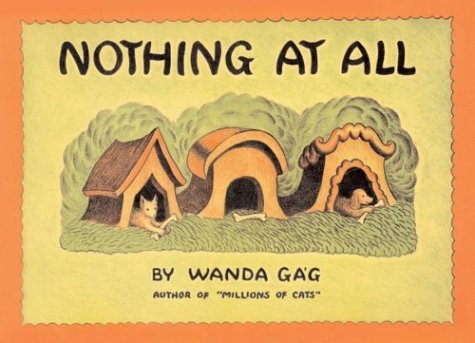
CPSIA chronicles, February 19
- Apparently I’m not the only one to lose patience with the New York Times, at least when they publish an editorial as bad as yesterday’s. My critique was not only (as mentioned) reprinted almost immediately at Forbes.com, but drew an extraordinary reaction elsewhere, including (not exhaustive): Virginia Postrel, Christopher Fountain, Patrick @ Popehat (strong language — now you’re sure to click), Carter Wood/ShopFloor, Mike Cernovich, Katherine Mangu-Ward/Reason “Hit and Run” (says I go “completely ballistic (in a good way!)”), Jonathan Adler @ Volokh Conspiracy, Memeorandum, Above the Law, Tim Sandefur, Mark Thompson/Donklephant (extensively “fisking” the Times editorial; related, Deputy Headmistress), Alison Morris/Publisher’s Weekly Shelftalker blog (law reminds her of Cory Doctorow novel Little Brother), Jacob Grier, Amy Alkon/Advice Goddess, Joe Weisenthal/ClusterStock, Valerie Jacobsen/Bookroom Blog. And: Deputy Headmistress at Common Room, Faith in Truth, Amy Ridenour/National Center and NewsBusters, Charles Kuffler/Off the Kuff. I’m particularly grateful to Robert Ambrogi at Legal Blog Watch for his wider look at how blogs and other newer media have helped correct the shortcomings of some venerable old-media institutions on this story.
- It’s often noted that the most visible economic interests on the children’s-products scene, namely the two big import-oriented toymakers, the makers of mass-market children’s apparel, disposable diapers, and the like, and the big retailers like Wal-Mart and Toys-R-Us, 1) mounted no effective resistance to CPSIA’s passage, 2) have experienced lobbyists in Washington who took an interest in the bill’s progress, and 3) can more or less live with the new rules as part of a business plan that includes mass factory runs and mass merchandising over which the high costs of testing and compliance can be spread, an advantage not shared by smaller producers and retailers. From this it is often concluded that the large companies purposely devised the law’s provisions so as to destroy smaller competitors. I doubt we’ll ever get a definitive answer to that question one way or the other unless Washington insiders step forward with firsthand accounts (hint), but I’d be wary of adopting the “Mattel and Hasbro are secretly chuckling all the way to the bank” meme without better evidence than has surfaced to date, for reasons outlined by David Foster, Kathleen Fasanella, and Deputy Headmistress. The last-named points quite reasonably to the long paper trail in which the Ralph-Nader-founded Public Citizen, a longstanding anti-business pressure group with close ties to the plaintiff’s bar, and its Nader-founded close ally PIRG, boast of having led the campaign for a maximally stringent CPSIA. Related points here (Eric Husman) and here and here (Deputy Headmistress). More: Mark Thompson has some highly pertinent things to add in the comments section.
- We’ve already visited the question whether one big organization that has vociferously defended CPSIA, the Natural Resources Defense Council, took care to obtain the needed manufacturer certifications before offering its own promotional baby “onesie”. Now Patrick at Popehat asks the same question about a second such group, Greenpeace.
- My favorite line from the late Daniel Patrick Moynihan was one about how when institutions fight each other for long enough they come to resemble each other. When I went over to Amy Alkon’s comments section and saw yet another “but Snopes said there’s nothing to this fuss about CPSIA” comment, it hit me: Snopes is now in the business of perpetuating urban legends.
- Unless you’re a New York Times editorialist, in which case you might not notice it under your own nose, it’s easy to find good coverage of the appalling debacle CPSIA has brought for youth powersports — motorbikes, mini-ATVs and the like. There’s USA Today, the Minneapolis Star Tribune, the Rapid City (S.D.) Journal, the Las Vegas Review-Journal, and Marketing Daily, for instance, as well as the discussion on Rush Limbaugh.
- Kopfschmerz means headache, and describes the sensation felt by German exporters of toys and children’s products.
- While we’re at it, I never did round up the numerous reactions to my post of a week ago on CPSIA and vintage books. A sampling includes The Anchoress, Todd Seavey (also reminded of Ray Bradbury), Open Your Ears and Eyes, Blackadder’s Lair, John Holbo/Crooked Timber, 5 Kids and a Dog, Mark Bennett’s noteworthy posts at Defending People reprised at Blawg Review #199, Carter Wood at NAM ShopFloor and again, David Foster at Chicago Boyz, Der Schweizer Narr (from Switzerland, in German), International House of Bacon (CPSIA “the single worst piece of regulation in my lifetime”), children’s author Vivian Zabel/Brain Cells and Bubble Wrap, She’s Right, Joey and Aleethea, Dewey’s Treehouse, Sherry/Semicolon Blog, and Classic Housewife.
- I’ve started a new tag, CPSIA and resale, for easy retrieval of posts in that category. There are already tags for the law generally and for its effects on books and minibikes — at some point I’ll get around to adding tags for the law’s effects on needle/apparel trades, toys, and libraries, too, and maybe others.
New at Forbes.com: “The New York Times Betrays Small Business”
That didn’t take long: Forbes.com has reprinted, in slightly condensed form, my blog post from this morning on the Times’s clueless editorial on the Consumer Product Safety Improvement Act, or CPSIA.
New York Times on CPSIA: “needless fears that the law could injure smaller enterprises”

Clueless. Disgraceful. Grossly ill-informed. And cruelly hard-hearted toward families and businesses across the country that are facing economic ruin.
Yes, after months of silence, the editorialists of the New York Times have finally weighed in with their view of how CPSIA is going. How bad did you expect their editorial to be? It’s that bad, and worse.
![]()
In a six-paragraph editorial about toy safety, exactly one paragraph is spent informing readers that anything about the law might have aroused any public criticism. And here is that paragraph:
Unfortunately, the commission has yet to implement important aspects of the new law. The delay has caused confusion and allowed opponents to foment needless fears that the law could injure smaller enterprises like libraries, resale shops and handmade toy businesses.
Got that? “Confusion” about the law, and “delay” in implementing it, are the real problems. Fears that small business will be hurt are “needless” and are being “fomented” by presumably sinister opponents.
Or, put differently: anyone who imagines this law might be impractical for libraries, resale shops, handmade toy businesses, or other small businesses is just imagining things — fooled, perhaps, by misinformation spread by the law’s opponents.
Libraries are just imagining things if they listen to people like Emily Sheketoff, associate executive director of the American Library Association, who spoke to the press last month about the choices facing libraries if some sort of exemption could not be found. (“Either they take all the children’s books off the shelves,” she said, “or they ban children from the library.”) Or people like Chip Gibson, president and publisher of Random House Children’s Books, who spoke to Publisher’s Weekly about the prospective effects of the law: “This is a potential calamity like nothing I’ve ever seen. The implications are quite literally unimaginable. …It has to be stopped.” It’s true that the CPSC’s last-minute stay of enforcement did save the new-children’s-book trade from calamity — but remember, to the Times, “delay” has been one of the problems in implementing the law, not something that has (so far) spared us its worst effects.
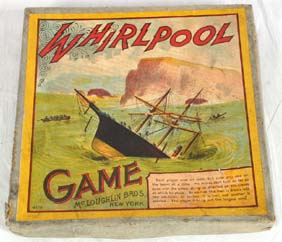
Thrift stores are just imagining things if they listen to people like Adele Meyer, executive director of the National Association of Resale and Thrift Shops, who said, “The reality is that all this stuff will be dumped in the landfill.” They should ignore all the reports, no matter how numerous and from how many sources, of local Goodwill operations and other thrift stores’ closing children’s departments or sweeping more than half their contents off the shelves, and of kids’ resellers and consignment shops taking massive financial hits or closing down entirely. All of these episodes are either imaginary or, if conceded as real, an instance of overreaction to the needless fears those moustache-twirling opponents have “fomented”. (Some more thrift-store coverage not previously linked: North Carolina, Nebraska, Minnesota with Goodwill pic, upstate New York (“We can’t be sure of the risk unless we take everything off the shelf”), South Dakota, Colorado). They should also stop predicting that the pursuit of their charitable missions will suffer a major blow from the loss of children’s resale revenue, because that sort of thing just undermines morale.
Handmade toy businesses are just imagining things if they listen to anyone like the Handmade Toy Alliance. It’s not as if anyone like them is on its list of members.
The Times editorialists warn against “needless fears” that the law “could injure” smaller enterprises. Got that? Not only will they not be driven out of business, they won’t even be “injured”. So small enterprises from coast to coast are just imagining things if they plead desperately for places like the Times to notice that they have already closed down, or will have to do so in the foreseeable future, or have lost thousands of dollars in unsalable inventories. Motorbike dealerships around the country are just imagining things if they think they’re staring at massive losses from the inability to sell their products, even though news-side talent at the New York Times has in fact covered their story well — coverage which the editorial studiously ignores.
For as long as anyone can remember, the New York Times has unthinkingly taken its line on supposed consumer-safety issues from organized groups like Public Citizen and Consumers Union. In this case, the result of such reliance has been to render the nation’s leading newspaper a laughingstock.
Public domain image: Grandma’s Graphics, Ruth Mary Hallock.
(& welcome Virginia Postrel, Christopher Fountain, Patrick @ Popehat, Carter Wood/ShopFloor, Mike Cernovich, Katherine Mangu-Ward/Reason “Hit and Run”, Jonathan Adler @ Volokh Conspiracy, Memeorandum, Above the Law, Tim Sandefur, Mark Thompson/Donklephant, Alison Morris/Publisher’s Weekly Shelftalker blog, Jacob Grier, Amy Alkon/Advice Goddess, Joe Weisenthal/ClusterStock, Valerie Jacobsen/Bookroom Blog readers. And: Deputy Headmistress at Common Room, Faith in Truth, Amy Ridenour/National Center and NewsBusters, Charles Kuffler/Off the Kuff.)
And more: Forbes.com liked this piece and has now reprinted it in slightly altered form. And I’m particularly grateful to Robert Ambrogi/Legal Blog Watch for his generous coverage.
CPSIA on the radio

Yesterday I taped a ten-minute segment with Ed Driscoll for his weekly Pajamas Radio show, which will air this weekend on Sirius. We talked about the legal dangers to vintage children’s books as well as the wider problems with the law in general. And conservative host Rush Limbaugh took up the subject yesterday on his show as well.
CPSIA and vintage books, cont’d: slicing the past
The article I wrote for City Journal Thursday on the legal fate of pre-1985 children’s books has been drawing all sorts of attention, and all I can acknowledge are a few of the highlights. Education expert Jay Greene and Darleen Click at Protein Wisdom are among those put in mind of Ray Bradbury’s novel Fahrenheit 451. “Of all the risks facing American children, old books must rank very, very low,” writes leading education blogger Joanne Jacobs. Will Benton: “Every time I learn something new about the CPSIA, I get more enraged.” Illinois blogger T. Varner notices an ad for a local thrift store saying it would no longer accept donations of a “very long list” of items including “children’s books published before 1985”; only later does it click. Hector Owen: “This is what happens when Congress passes these bloated bills that nobody reads, and the President signs them, and then we start to find out what was in there. Oh dear, what did they just do last week?” JDub at Ace of Spades: “Overlawyered has pretty much flooded the zone on this — I don’t want to simply link all of the things he’s got, so give him a look. … Go. Read. Be angry.” And Mark Bennett, of criminal law blog Defending People, gives it a mention in the course of hosting Blawg Review no. 199.
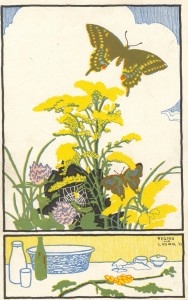
If you have time to read only one post from the weekend on the topic of CPSIA and books, however, make it Common Room‘s. She discusses, among other topics, the narrowness of the “collectibles for adult use” exception, the extra-vulnerable status of vintage kids’ nature and science books, which go out of print quickly and are seldom reprinted, and the fate of ex-library versions, beloved by book buyers on budgets. She also confesses to a temptation to slice the gorgeous illustrations out of certain books, a practice likely to be encouraged by CPSIA, if only because 1) the illustrations often have monetary value and might benefit from the defense that on their own they are not a product intended for children’s use; 2) the mutilated book that remains will be a less risky thing to donate, circulate or sell, since it is the color illustrations that are thought to pose the prime risk of containing infinitesimal lead exposures.* (More: as part of another good roundup, she calls our attention to this excellent Valerie Jacobsen post on why “marketing vintage children’s books as ‘adult collectibles’ will work for some children’s books, but only for a few.”)
Sierra Highlands, who like Common Room includes some beguiling illustrations, writes:
….so long as Google Books and Gutenberg are out there, the old books won’t be gone completely, but it hurts to hear of the beautiful old editions going out with tomorrow’s trash. It really, really hurts. There’s something about the physical presence of an old book that links us to our ancestors and to a world where books were loved enough to be put into beautiful editions. When I pick up an old book, often shabby on the surface but well handled, well made, well-loved, quiet but rich in form and content, I feel connected to the Permanent Things in body as well as spirit.

The BookShopBlog owner’s removal of six boxes of older children’s books from her shelves, mentioned here, also started an Etsy thread. Another poster at the same location had an idea for a national read-in day of protest for vintage books on the last day of National Library Week, Apr. 18.
Also, I was linked by a resource page on Anne of Green Gables and her creator, L.M. Montgomery, which made my week all by itself. I’ve started a special tag for CPSIA and books, distinct from the general CPSIA tag.
*Just to clarify the legalities once more: CPSIA does not make it unlawful to own pre-1985 kids’ books, nor does it ban the sale of such books when, as is true for many millions of them, they contain no lead in their pigments. But resellers cannot be sure which do and which don’t, and the law exposes them to liability should they stock a book with lead even if the misstep was in good faith and even if (of course) no child is hurt. The CPSC’s guidance provides a conspicuous safe harbor for the sale of books printed after 1985.
CPSIA, board games and hobby gaming, cont’d
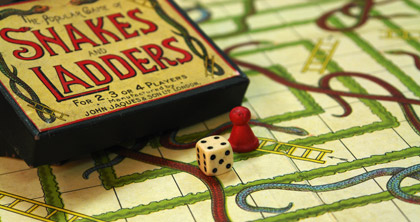
If you’re interested in older board games you may have gotten into the habit of haunting thrift stores, but over at leading gamer site Board Game Geek, they’re noticing that things are changing for the worse as shelves empty at many stores. Our earlier coverage of CPSIA’s likely impact on gaming is here.

